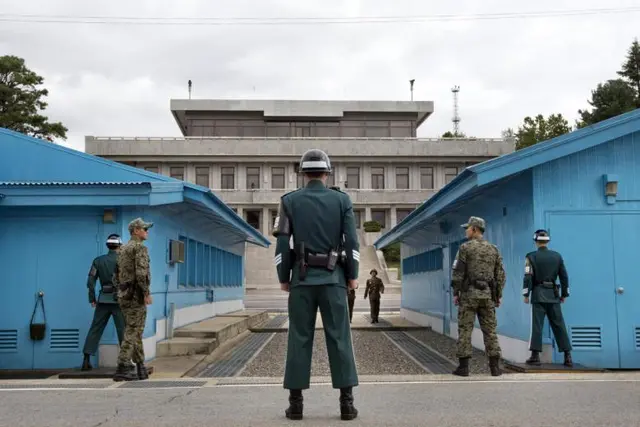South Korea planned to cut its standing armed forces by more than 110,000 over the next eight years amid lower birth rate that will reduce the number of draftees, the Defense Ministry said Thursday.
Shim Yong-shik, director-general for the Defense Ministry's defense reform, told a press briefing that the military will reduce its standing forces from the current 633,000 to 522,000 by 2022 under the defense reform plan for 2014-2030.
The reduction came amid the country's lower birth rate, which will cut the number of conscripts. In South Korea, all able-bodied men must serve in the military for some two years mostly in their 20s.
Most of the reduction will be made in the Army, whose soldiers will decrease from the current 498,000 to 387,000 by 2022. The size of troops in other branches will be almost unchanged at 41, 000 for the Navy, 65,000 for the Air Forces and 29,000 for the Marine Corps.
Instead, the military will raise the number of non-commissioned officers with technical expertise and special skills to offset the decline in standing forces. The number of non-commissioned officers, who are professional soldiers, will increase from 116, 000 to 152,000 over the next eight years.
The military command structure will be changed to prepare for the transfer of wartime operation control of allied forces from the United States.
A ground forces operations command will be set up by combining the first and third field army commands to let one ground forces commander control front-line corps under the direct order from Joint Chiefs of Staff chairman.
The structural change, however, was expected to take some time as South Korea has asked the United States to delay the wartime command of combined forces after the Democratic People's Republic of Korea (DPRK) conducted its third nuclear test in February last year.
The wartime command was originally supposed to be returned to South Korea in 2007, but was postponed twice to December 2015. It was widely expected to be delayed once more later this year.
Last year's "Key Resolve" command post exercise was first led by the South Korean Joint Chiefs of Staff to brace for the wartime control transfer, but this year's exercises was led again by the top U.S. Forces Korea commander.
Meanwhile, the Navy will establish a submarine command to control more than 20 submarines, which will be held by the Navy after 2020.
The Air Forces will set up a satellite surveillance unit as the military plans to acquire five multi-purpose satellites capable of monitoring all areas of the DPRK by 2022.
 简体中文
简体中文





